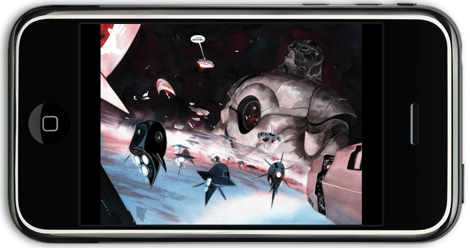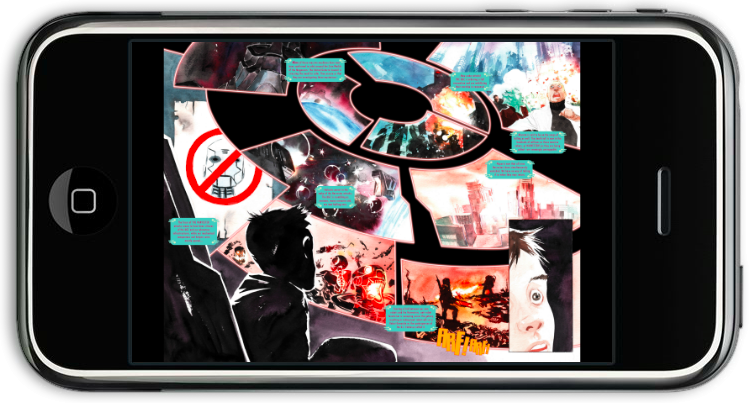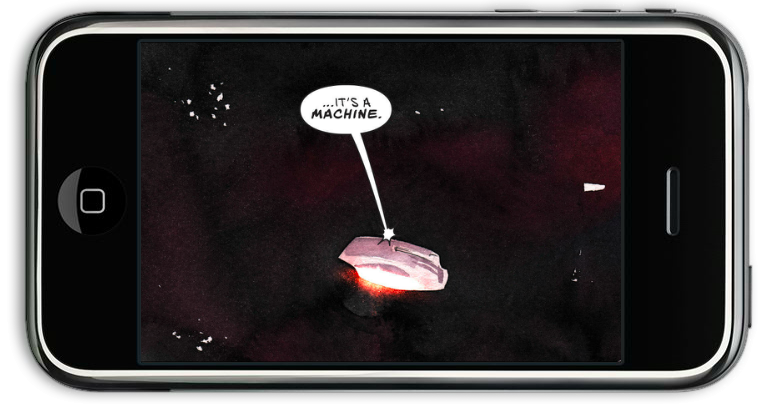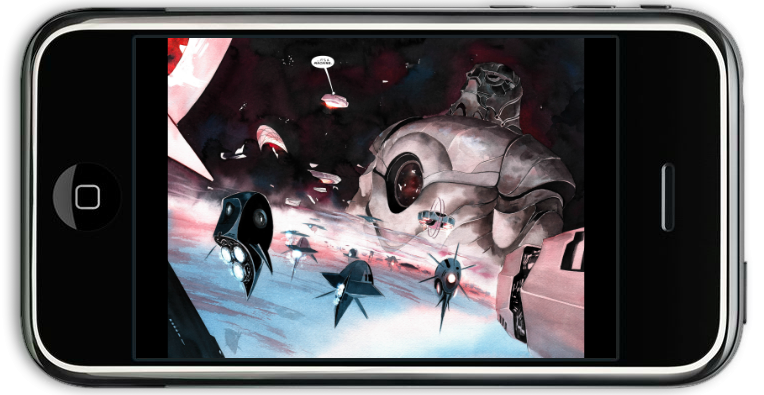
Exploring New Ways of Reading Comics
When I read, I am device-agnostic—I’m just as likely to read on my phone, tablet, or laptop as a physical comic book.
I’ve often wondered about how apps and publishers approach the digital reading experience—how they know when to zoom in on a panel and when to zoom out, and how they take the reading experience into consideration.
So I was thrilled to speak with Tia Vasiliou, a digital editor at comiXology who thinks about these questions all the time in her work with comiXology’s Guided View.
Melody Schreiber: I didn’t realize there was an editor devoted to Guided View! Can you tell me a little more about what your job entails? What are the best parts of the job, and what aspects challenge you? Do you ever go back to a book and tweak which panels are shown?
Tia Vasiliou: All of the Guided View is done by digital editors. There are too many interpretive, creative, or analytical decisions that need to be made on a case-by-case basis for it to be automated. Art just doesn’t work that way. As much as possible, we want to avoid altering or imposing on the creators’ work, so our job entails understanding the storytelling in a comic on such a granular level that we can re-present it one story beat at a time. We use a proprietary tool to single out frames and place them in sequence. Which sounds easy enough, but there are a hundred things to consider for every frame. The challenges are in some ways the best parts of the job, because you really have to think critically about how comics are constructed and read. As a complete nerd, I love that sort of thing.

All artwork in this post comes from Jeff Lemire and Dustin Nguyen’s Descender #1, published by Image Comics.
For example, comics with clean, straight grids that use unbroken panel borders are easy to put into Guided View. But say there is action or text that sticks out of one panel and into another. In the visual language of comics, this usually means something more than just, oh, maybe the artist ran out of room. It can suggest that what’s happening in this story beat is expansive, explosive, or connected to the panel it touches from a narrative point of view. How do we convey that subtlety with Guided View? We have various ways of isolating the story beat while preserving the suggestion that it extends beyond the borders of that particular frame.
A non-rectangular panel in Guided View (first image), from the center of this page (second image).
Another challenge is panels that aren’t easily put into a rectangular shape. Diagonal panels are a fairly common layout in comics and manga, and we wouldn’t want to lose any of the dynamism that a diagonal panel conveys, so we have to be very judicious about how we crop into the adjacent panels to avoid spoilers, odd tangents, or other distraction to the core storytelling of the art.
Guided View can work as another layer of the reading experience, or it can simply be a way to make the text legible while you read on a smaller screen. In cases like this, it’s probably the latter, and that’s okay. We have to trust the reader that they will understand those intricate layouts even as they read one frame at a time.
Once we set the Guided View, we have a tool that allows us to preview it in a smart phone screen, so we can catch any tweaks that might need to happen before a book goes live.
The digital editors have ongoing best practices conversations. It’s important to all of us that we’re good stewards of the comics we work with.
MS: Do you have a comics background? Were you a comics reader?
TV: I’m one of the few digital editors here who doesn’t have a comics background. My background is in art history, though, so I still have a lot of experience with visual language and analyzing how art is put together to tell a story. I am a comics reader—in fact, I was mostly reading comics instead of finishing my dissertation for my art history PhD (which was, unfortunately, not about comics) so I figured I should do the thing I seemed to want to do most. And now my literal job is to read comics all day.
MS: When I first started reading comics, I found Guided View really helpful in reminding me to slow down and enjoy each panel. (I come from a book background, so at first I focused too much on the words!) Is that something that happens often, and is it something you keep in mind as you work?
TV: I hear this from quite a few people, actually. Reading comics is a particular type of literacy, so it uses a different way of thinking than if you’re reading prose fiction, or watching a film, even though it does have a lot in common with both of those things. Text and image work together to tell a sequential narrative, and you’ll miss quite a bit if you aren’t used to mentally converging the two to read the story.
Guided View is an excellent tool to help new comics readers cultivate their “comics eye.” Even after readers feel like they’ve got a handle on that, many people continue to read in Guided View because they like how it encourages them to focus and take in every detail of every panel, or because it helps them avoid having their eye dart around the page and spoil the action ahead, or even for a reason as simple as being able to read them.
At SDCC last year a man told us that he’d been a lifelong comics reader until his eyesight became so poor he could no longer read the text in his print books, so he began buying the digital copies because Guided View made the text legible for him again.
But even with perfect eyesight, if you’re reading on your phone, a whole comics page isn’t legible. So, accessibility is another great thing about Guided View.
“How do we make the story legible on a smaller screen while preserving the creators’ intent?” is pretty much our main guiding principle as digital editors. We are very cognizant of how reading in Guided View might affect the reading experience.
A zoom-in to make text legible on a smart phone screen (first image), followed by a reveal of the entire double page spread (second image).
MS: What do you hope your audience takes away from Guided View? How does it affect how people read and enjoy comics, especially in digital formats? Does reading in digital brings something to the table that print doesn’t?
TV: My hope is that Guided View gives people another tool for reading, understanding, and enjoying comics. I know there is a sort of general concern in the world that we stare at screens too much, but Guided View is not a passive reading experience, and I think it does encourage people to slow down, to read the artwork more carefully, to notice each moment of the story. That kind of practiced close looking is a skill you can use even when you aren’t reading in Guided View.
Digital is another access point for people to find and read comics and fall in love with the medium. At comiXology, we want to make everyone a comics, graphic novel, or manga fan. That’s really what it’s all about for us, at the end of the day. If Guided View can help people discover comics, that’s a pretty worthwhile contribution.





















